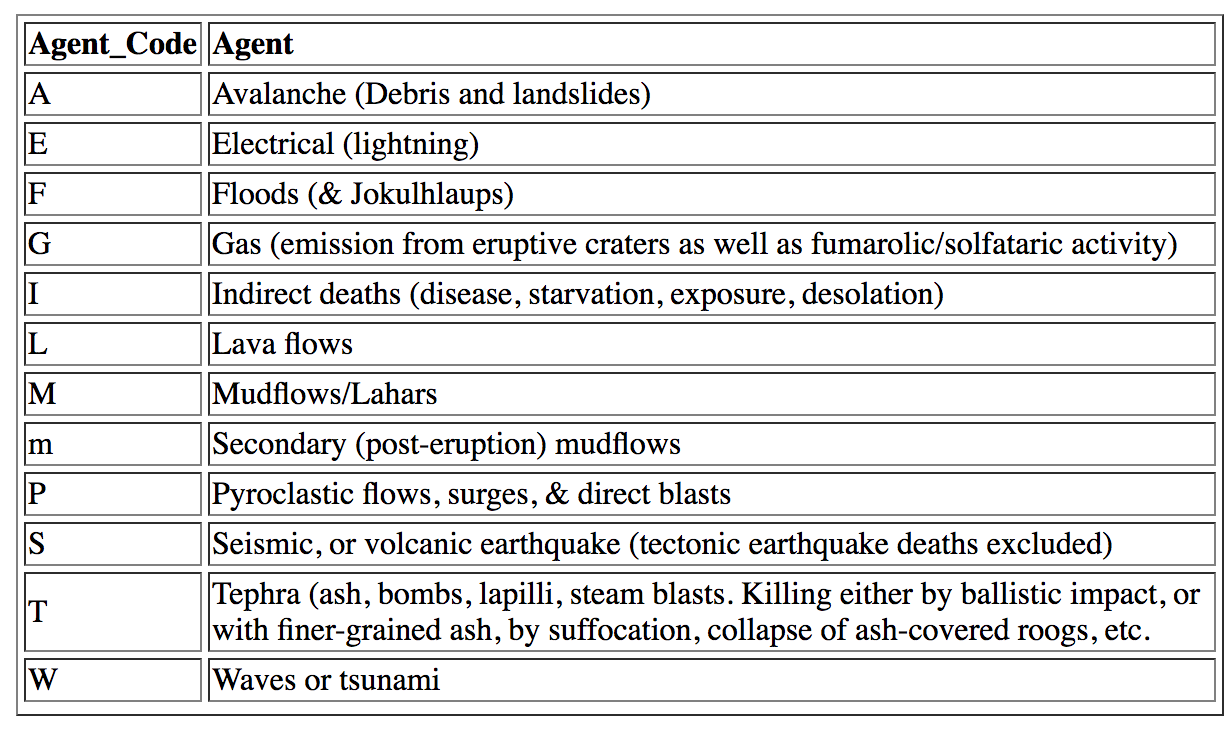- Use higher-order functions to manipulate data about historical volcanic eruptions
Write your code in VolcanoAnalyzer.java.
volcano.json contains a data set of 804 historical volcanic eruptions. Below is a sample of the data for each eruption.
{
"year": 1362,
"tsu": "",
"eq": "",
"name": "Oraefajokull",
"location": "Iceland-SE",
"country": "Iceland",
"latitude": 64,
"longitude": -16.65,
"elevation": 2119,
"type": "Stratovolcano",
"vei": 5,
"agent": "T,F",
"deaths": "220"
}Use java streams and any other higher-order functions to analyze the data in the following ways:
- Return the volcanoes that erupted in the 1980s.
- Return an array of the names of volcanoes that had an eruption with a Volcanic Explosivity Index (VEI) of 6 or higher.
- Return the eruption with the highest number of recorded deaths.
- Return the percentage of eruptions that caused tsunamis.
- Return the most common type of volcano in the set.
- Return the number of eruptions when supplied a country as an argument.
- Return the average elevation of all eruptions.
- Return an array of types of volcanoes.
- Return the percentage of eruptions that occurred in the Northern Hemisphere.
- Return the names of eruptions that occurred after 1800, that did NOT cause a tsunami, happened in the Southern Hemisphere, and had a VEI of 5.
- Return the names of eruptions that occurred at or above an elevation passed in as an argument.
- Return the agents of death for the ten most deadly eruptions.
Volcano data retrieved from: National Geophysical Data Center / World Data Service (NGDC/WDS): Significant Volcanic Eruptions Database. National Geophysical Data Center, NOAA. doi:10.7289/V5JW8BSH
